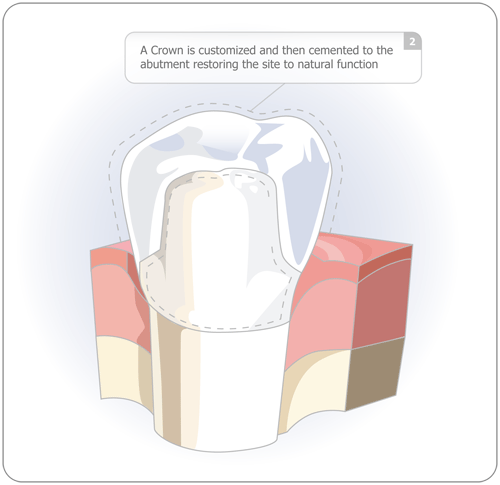Gum Disease / Periodontics

What is gum disease?
Gum disease, also known as periodontal disease, is a bacterial infection of the gums and tissues that support your teeth. It is caused most often by the build-up of plaque and tartar when teeth are not routinely brushed and flossed.
There are two major stages of periodontal disease: gingivitis and periodontitis. Gingivitis affects only the gums. It is a mild form of gum disease, and if properly treated, may be reversed. Left untreated, gingivitis turns into periodontitis. During this more destructive disease stage, bacteria penetrate into the deeper pockets of tissue where bone and membrane support your teeth. Periodontitis can lead to tooth loss and serious health problems.
Research shows that 47.2 percent of American adults over the age of 30 have mild, moderate or severe gum disease, which is the leading cause of adult tooth loss. It is also possible to have gum disease without experiencing any symptoms. The best way to avoid or manage gum disease is by practicing good oral hygiene and visiting your dentist regularly.


Book An Appoinment
Helpful Videos
What are some risk factors?
You may be at risk for gum disease if any of the following apply to you:
- Tobacco and alcohol use
- Systematic diseases
- Genetics
- Pregnancy
In addition, the following types of prescription drugs may also increase the risk of gum disease. Talk with your dentist if you are taking:
- Steroids
- Cancer therapy drugs
- Oral contraceptives
- An anti-epilepsy drug
- A calcium channel blocker
What is a periodontist?
Periodontists are qualified dentists who have an additional three years of education and specialized training in the prevention, diagnosis and treatment of gum disease. They also perform dental implant surgery and cosmetic periodontal procedures. Your periodontist will work closely with your dentist to manage your oral health.
What are some warning signs?
PGum disease is considered a "silent" disease because pain does not always accompany warning signs. See your dentist if you experience:
Changes to your Teeth, Bite or Dental Work
- Loose or separating teeth
- A change in the way your teeth fit together when you bite
- Bridges or partial dentures that no longer fit properly
- Fillings that have become defective
Changes to Your Gums
- Recurring redness, puffiness, tenderness or swelling of your gums
- Gums that bleed while brushing teeth, using dental floss or biting into hard foods (like an apple)
- Gums that are pulling away (receding) from your teeth, causing them to look longer
Bad Breath or Odd Taste in Your Mouth
- Persistent bad breath
- Persistent metal taste in your mouth
Sores in Your Mouth
If the treatment of choice is a porcelain crown many treatment methods are available:
- Pus between your gums and teeth
- A sore or irritation in your mouth that does not improve within two weeks
How do we treat gum disease?
How your periodontist treats your gum disease is largely dependent upon the stage of your infection and the amount of deterioration involving your gums, teeth, supporting tissues and bone.
After reviewing your Digital X-rays and performing a thorough periodontal exam, your periodontist will discuss your treatment options, answer questions, and explain what happens:
- During and after the procedure(s)
- The number of office visits required for treatment
- What to do post-treatment as your gums heal
- How to keep gum disease under control after treatment is complete
Non-Surgical Treatment
The most well-known type of non-surgical treatment is known as scaling and root planing. This under-the-gum procedure involves a careful removal of plaque and tarter from the tooth roots. During this procedure, your hygienist will remove harmful bacteria and irritants from deep beneath your gums to prevent plaque from accumulating again.
Surgical Treatment
Your periodontist may perform periodontal surgery to eliminate bone infections or to regenerate lost bone. The most common surgical treatments include:
Pocket Reduction
During this procedure, a local anesthetic is applied. The gum tissue is folded back to expose deeper tissues. Irregular surfaces of the damaged bone may need to be smoothed to expose otherwise hidden areas of bacteria. Then, harmful bacteria are removed. Gum tissue is then closed and sutured in place.
BONE REGENERATION
During this procedure, a local anesthetic is applied. Gum tissue is folded back to expose deeper tissues. Then disease-causing bacteria are removed. Membranes, bone grafts or tissue-stimulating proteins are used to encourage your body's natural ability to regenerate bone and tissue and reverse some of the damage of gum disease.
Excess gum and bone tissues are then reshaped to expose more of the natural tooth. This can be done to one tooth (to even out the gumline) or to several teeth (to expose your natural, broad smile). Gum tissue is then closed and sutured in place.